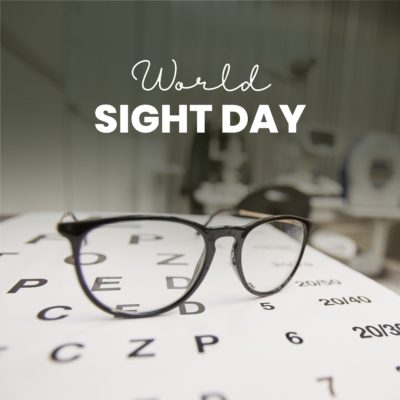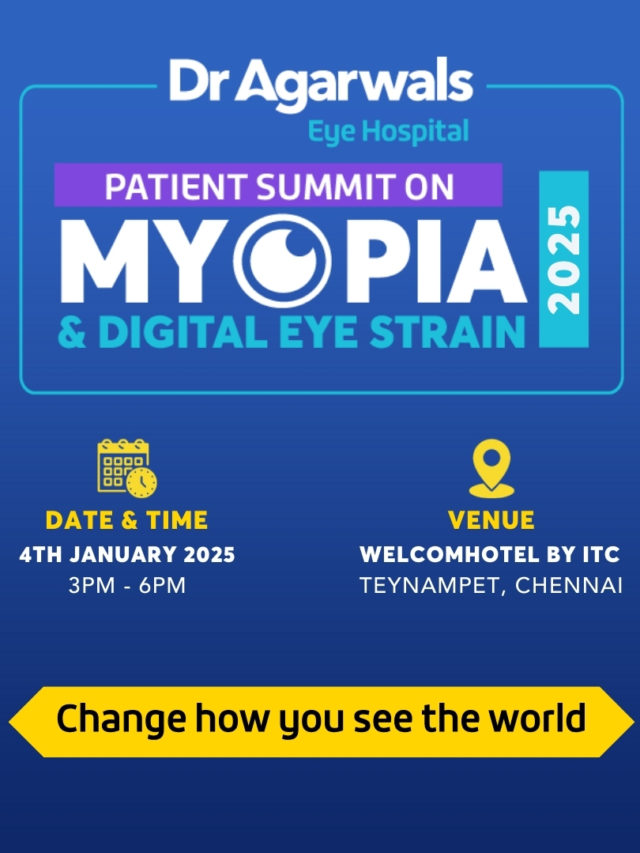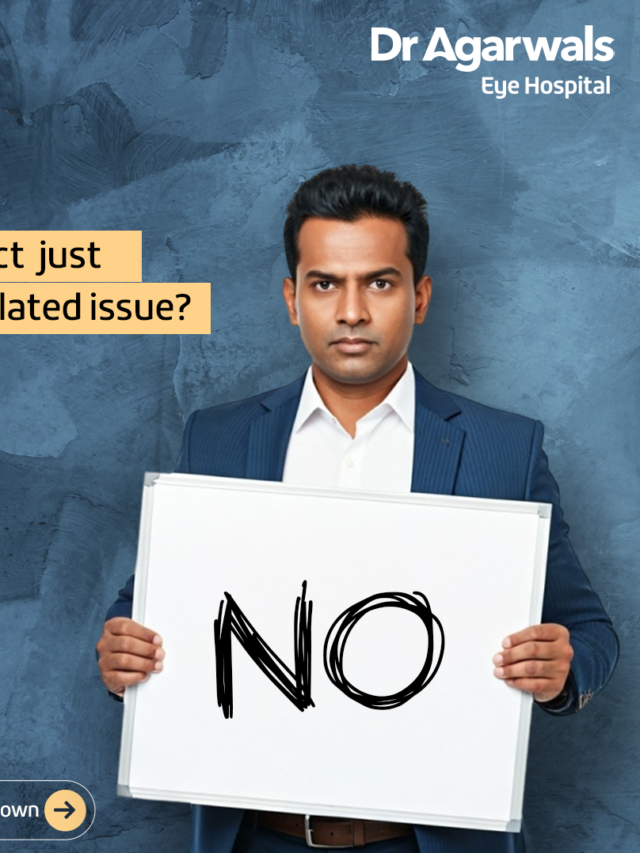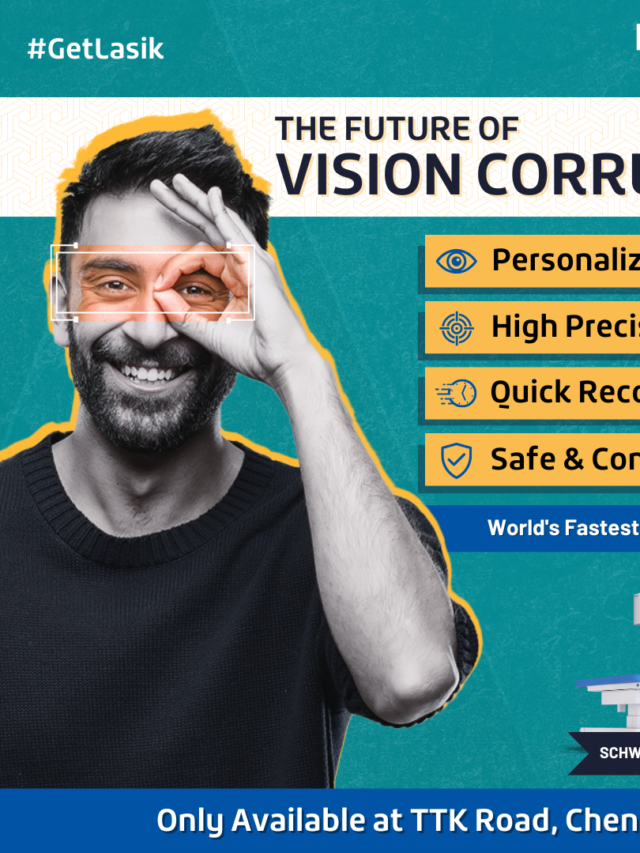World Sight Day is a global initiative observed annually on the second Thursday of October to raise awareness about eye health and preventable vision loss. With over 2.2 billion people worldwide living with some form of vision impairment and nearly one billion of these cases being preventable or untreated, this awareness campaign plays a vital role in addressing global eye health challenges.
This guide explains the causes of preventable blindness, highlights key warning signs, and offers ways individuals and communities can protect and prioritise their vision.
What Is World Sight Day and Why It Matters
World Sight Day is coordinated by the International Agency for the Prevention of Blindness (IAPB) and observed on the second Thursday of every October. It is recognised as a global awareness day for eye health that draws attention to blindness and visual impairment, while advocating for accessible, affordable eye care for everyone.
The purpose of this observance is to inspire individuals, governments, and healthcare providers to prioritise vision care, promote early detection, and improve access to treatment. Despite significant progress, more than one billion people still lack access to essential eye care services. The campaign encourages everyone to take personal responsibility for their vision by having regular eye tests and making healthy lifestyle choices.
Date and Theme of World Sight Day 2025: Love Your Eyes
In 2025, World Sight Day will be observed on Thursday, 9 October. The theme for this year is “Love Your Eyes.”
It reminds individuals to practise proactive eye care and make regular eye examinations a part of their routine health checks. The theme also calls on communities to advocate for inclusive and accessible vision services, empowering people to protect their eyesight at every stage of life.
History and Evolution of World Sight Day
World Sight Day was first celebrated in 2000, through collaboration between the IAPB and the World Health Organisation (WHO). The goal was to raise awareness about avoidable blindness and promote global strategies for vision preservation.
Over the years, it has evolved into a global movement supported by governments, NGOs, and medical societies, with thousands of events and educational campaigns held worldwide every October.
Understanding Blindness and Visual Impairment
According to the World Health Organisation, approximately 2.2 billion people globally experience vision impairment, and nearly half of these cases are preventable or treatable. These preventable blindness statistics reveal the importance of timely diagnosis, treatment, and consistent public awareness to prevent avoidable vision loss.
Common Causes of Vision Loss and Blindness
Major causes of preventable blindness include:
- Cataracts are clouding of the lens, often age-related but treatable with surgery.
- Glaucoma is optic nerve damage, typically associated with elevated eye pressure.
- Refractive Errors conditions such as myopia (short-sightedness) and hyperopia (long-sightedness).
- Diabetic Retinopathy is caused by damage to retinal blood vessels due to diabetes.
- Age-Related Macular Degeneration (AMD) is a progressive condition that causes central vision loss, which is common in older adults.
Many of these conditions are treatable when detected early, reinforcing the campaign’s mission to prevent blindness globally.
Underlying Factors: Genetics, Lifestyle & Environment
Vision problems often result from a mix of genetic, lifestyle, and environmental factors.
- Genetics: Certain eye conditions, like glaucoma or macular degeneration, can run in families.
- Lifestyle: Smoking, poor nutrition, and excessive screen time contribute to vision decline.
- Systemic Health: Chronic diseases such as diabetes and hypertension can damage blood vessels in the eye.
- Environment: UV exposure, dust, pollution, and poor lighting can worsen eye strain or trigger long-term damage.
Adopting healthier habits such as eating a diet rich in leafy greens and omega-3 fatty acids, quitting smoking, and using UV-protected sunglasses significantly reduces the risk of developing visual impairments.
Impact of Vision Loss on Individuals and Communities
The economic impact of vision impairment extends beyond medical costs. Vision loss affects employment opportunities, reduces productivity, and increases the risk of social isolation and depression.
For children, learning and development are closely linked to good vision; poor vision can delay motor skills and lower academic performance. Addressing these challenges through public education and preventive care is critical to community development and social well-being.
How World Sight Day Promotes Prevention & Early Detection
World Sight Day advocates early detection as the most effective way to prevent blindness. The campaign highlights the importance of regular eye examinations, accessible care, and education about warning signs of underlying eye diseases.
Warning Signs of Eye Problems to Never Ignore
Key symptoms that require immediate attention include:
- Blurred or cloudy vision
- Difficulty seeing at night
- Sudden flashes of light or floaters
- Persistent eye pain or redness
- Gradual loss of side (peripheral) vision
- Trouble focusing on near or distant objects
Ignoring these signs can delay diagnosis and treatment, leading to permanent vision loss.
Tips to Protect Your Eyesight and Prevent Blindness
Practical steps to protect vision and prevent blindness include:
- Scheduling annual comprehensive eye exams
- Wearing UV-protected sunglasses when outdoors
- Following a nutrient-rich diet with leafy greens, carrots, and oily fish
- Limiting screen time and applying the 20-20-20 rule (every 20 minutes, look 20 feet away for 20 seconds)
- Avoiding smoking and managing chronic conditions such as diabetes and high blood pressure
Simple preventive habits can significantly reduce the risk of vision loss.
Global Campaigns and Activities on World Sight Day
World Sight Day brings together international organisations, eye health professionals, and the public through activities such as free screening camps, school-based vision programmes, public rallies, and social media awareness campaigns.
In 2025, the global ophthalmic webinar will feature experts from more than 38 countries, promoting collaboration and knowledge exchange. Digital initiatives such as the #LoveYourEyes campaign encourage people to share their eye health commitments and motivate others to schedule eye tests.
Get Involved: How You Can Support the Fight Against Blindness
Individuals can contribute to preventable blindness efforts in several ways:
- Book an eye check-up for yourself and your family.
- Volunteer or donate to eye health charities like the IAPB, OneSight EssilorLuxottica Foundation, Optometry Giving Sight, Lions Clubs International, or Orbis International.
- Promote awareness by sharing World Sight Day posts and joining digital campaigns such as #LoveYourEyes.
- Encourage schools, workplaces, and communities to host awareness or screening events.
Resources and Organisations Making a Difference
- International Agency for the Prevention of Blindness (IAPB): Coordinates World Sight Day and advocates for global eye health policies.
- OneSight EssilorLuxottica Foundation: Expands sustainable access to vision care and provides free glasses and eye exams.
- Optometry Giving Sight: Supports global optometry projects through the World Sight Day Challenge.
- Lions Clubs International Foundation: Operates the SightFirst campaign and manages eyeglass recycling programmes.
- Orbis International: Runs the Flying Eye Hospital, providing training and advanced eye care worldwide.
These organisations form the backbone of global initiatives to prevent blindness and promote vision equality.
Conclusion: A Shared Vision for a Brighter Future
World Sight Day serves as a vital reminder that millions of people continue to live with avoidable visual impairment. It calls for global unity to prevent blindness, promote early detection, and ensure access to affordable eye care.
With most causes of vision loss being preventable blindness conditions, awareness, timely diagnosis, and community involvement can transform global eye health outcomes. Make eye care a priority, schedule your next eye test, encourage others to love their eyes, and support organisations working to create a world where everyone can see clearly.










